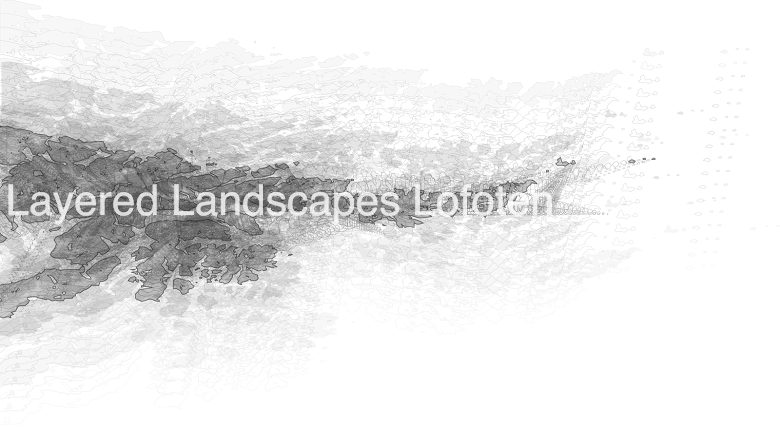Keywords: connectivity / layering / overlapping information
Literature: Becoming Places, (Dovey 2009: part I, chapter 2; Place as Assemblage)
Lecturer: guest lecturer; John Pløger
The concept of imbrication signifies literally overlapping and intertwining of different materials as concrete as tiles or textiles or overlaying geological structures. The concept is useful in understanding of complex layering and connectivity in society, introduced to planning by Henri Lefebre in his involvement with the project Novi Beograd (1980s) with a broader social science or philosophical approach [than architects] (Kofman and Lebas in Lefebvre 1996: 23).
Imbrication, assemblage or folding are expressions of multiplicities of concepts that constitutes society; In assemblages you find states of things, bodies, various combinations of bodies, hodgepodges; but you also find utterances, modes of expression, and whole regimes of signs. The relations between the two are pretty complex. For example, a society is defined not by productive forces and ideology, but by ‘hodgepodges’ and ‘verdicts.’ Hodgepodges are combinations of interpenetrating bodies. These combinations are well-known and accepted (incest, for example, is a forbidden combination). Verdicts are collective utterances, that is, instantaneous and incorporeal transformations which have currency in a society (for example, ‘from now on you are no longer a child’…) (interview with Gilles Deleuze by Catherine Clément 1980, in Lapoujade 2007).
Society as assemblage is an approach that looks at the whole as an inextricable combination of interrelated parts. But if the rhizome is the foundation from where an assemblage is built, it also connects any point to any other point, and its traits are not necessarily linked to traits of the same nature. The rhizome is reducible neither to the One nor the multiple. (…) It is composed not of units but of dimensions, or rather directions in motion. (…) Unlike a structure, which is defined by a set of points and positions, with binary relations between the positions, the rhizome is made only of lines: lines of segmentarity and stratification as its dimensions (Deleuze&Guattari 1980: 21).
In an open end experimental approach to planning we need to consider any kind of knowledge, to make maps that are rhizomatic rather than tree-like, mapping networked connectivities rather than stable territories (…) mapping as an open and inclusive process of disclosure and enablement (Dovey 2010: 29). Mapping possesses a way of transforming and evoking findings, knowledge and understanding, and even what is to become, into spatial graphic representations. However using complex approaches of overlapping information in planning requires knowledge of the nature of different kind of mapping.
Doreen Massey emphasizes that we have to be aware of the possible impact of mapping; I love maps says Massey; They carry you away; they set you dreaming. Yet it may well be none the less that our usual notion of maps has helped to pacify, to take life out of, how most of us most commonly think about space. Maybe our current, ‘normal’ Western maps have been one element in that long effort at the taming of the spatial (Massey 2008: 106). When Massey talks about the spatial, she also points at the danger of mapping being used for political purposes, as a tool for reduction or colonization. Therefor we should make maps and imbrications that are not predictable or prejudiced, but maps that tell stories made out of a heterogeneity of practices and processes (Massey 2008: 107).
However the tendencies in modern Western reductionist use of maps Massey reminds us that maps can constitute a whole; a rhizomatic imbrication; Maps vary of cause. On both sides of the Atlantic before Columbian encounter maps integrated time and space. They told stories. While presenting a kind of picture of the world ‘at one moment’ (supposedly) they also told the story of its origins (Massey 2008: 107). The map can be either tracing of already alleged competence, or a complex spatial assemblage. The rhizome is altogether different, a map and not a tracing. Make a map, not a tracing. (…) What distinguishes the map from the tracing is that it is entirely oriented toward an experimentation in contact with the real. (…) The map is more than a simple ‘tracing’ of an existing form because it is infused with a desire to understand how the place might be navigated or changed. Deleuze&Guattari 1980: 12-13).
Mapping time-space sequences, Vardø: Marianne Lucie Skuncke
Kim Dovey, Becoming Places 2010
Gilles Deleuze, interview by Catherine Clément 1980, in Lapoujade 2007
Gilles Deleuze and Felix Guattari, A Thousand Plateaus 1980
Doreen Massey, for space 2008
Henri Lefebvre, Writings on Cities 1996
Sabine Bitter, Jeff Derksen and helmut Weber, Autogestion, or Henri Lefebvre in New Belgrade 2009
Marianne Lucie Skuncke, Emerging Arctic Landscapes, master course by Magdalena Haggärde and Gisle Løkken, BAS 2011

No comments:
Post a Comment
Note: Only a member of this blog may post a comment.